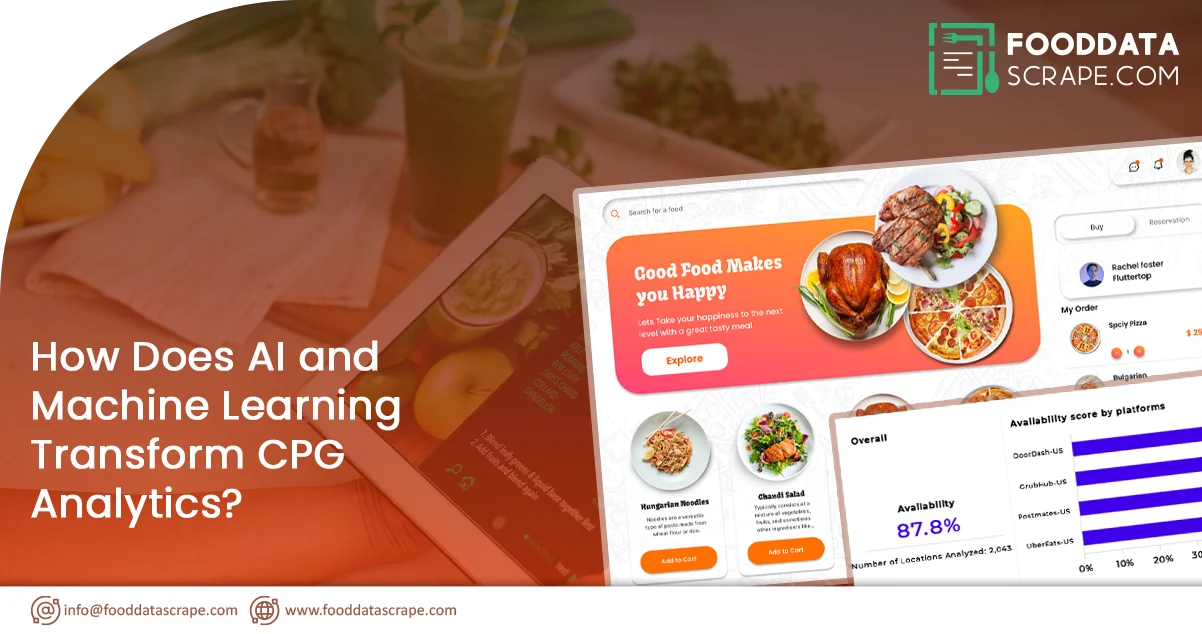In today's hyper-competitive marketplace, CPG analytics is a vital tool for businesses as it provides beneficial information on the behavior of consumers, the performance of products, and sales trends. This guide is an exhaustive disclosure of CPG analytics, focusing on its primary function for the company's growth. Companies that master CPG analytics can leverage the data to create tailored strategies, fine-tune their marketing campaigns, and improve their products. Consequently, with hands-on knowledge of buyers' requirements and market dynamics, companies can outlive the curve, catch new opportunities, and, in the end, stay in the dynamic CPG landscape.
A Deep Understanding of CPG Analytics
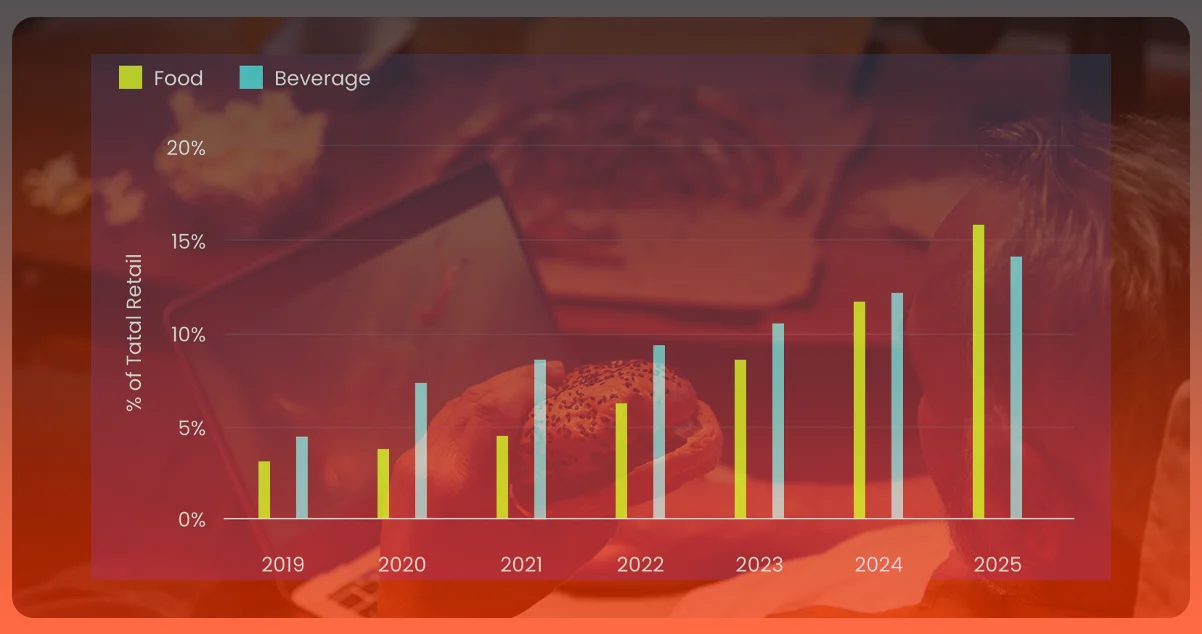
CPG Analytics studies consumer behavior, product performance, and market dynamics in a fast-moving retail environment of consumer packaged goods (CPG). This tool gives organizations precious knowledge to understand customers, optimize product assortment, and maximize revenue growth. CPG analytics involves numerous aspects, including sales data analysis, consumer segmentation, trend spotting, and competitive benchmarking. Through sales data analysis, companies can uncover regular sales patterns, forecast the demand, and optimize pricing strategies to get the most income. Understanding consumer tastes and behavior will help businesses customize marketing campaigns, improve brand loyalty, and drive customer engagement. Furthermore, CPG analytics enables companies to track market trends, detect new chances, and stay one step ahead in a competitive environment. Thanks to the in-depth CPG analytics expertise, companies can make data-driven decisions, avoid unnecessary risks, and grasp the available market opportunities to ensure steady growth in the current competitive environment.
Significance of CPG Analytics
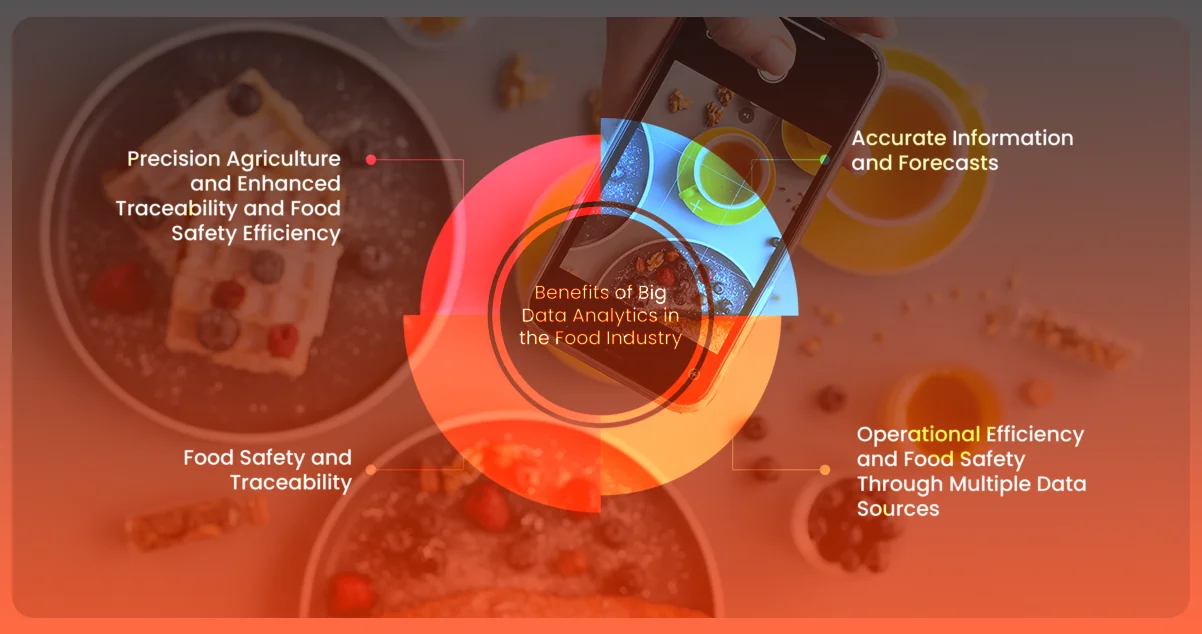
CPG analytics has become a pivotal tool to support the CPG business in making data-driven business decisions. Here's why it's crucial:
- Insights into Consumer Behavior: By conducting comprehensive data analytics from various sources, such as social media, surveys, and transactions from sales records, the CPG analytics technique reveals priceless findings concerning consumers' current preferences, buying patterns, and needs. Organizations can fine-tune their marketing strategies by tackling this information base, reorganizing their product offerings, and intensifying customer engagement.
- Spotting Market Trends: A successful brand in the CPG market is characterized by constantly tracking market trends, which enables it to stay competitive and relevant to consumers. CPG analytics provides companies information on changing customer preferences, trend disclosure, and competitor strategies. Through such data analytics, companies' employees can identify business chances and make the right strategic decisions.
- Enhancing Sales Performance: CPG analytics allows companies to optimize their sales performance without misses, as it can target growth points. Businesses can, for instance, use data on product sale quantities, price trends, and the effectiveness of promotions to change the product range, adapt pricing strategies, and access individualized target markets to increase sales.
In general, CPG analytics is the basis for strategic decisions, empowering companies to make precise and dynamic decisions, increase the proliferation of offerings, and boost sales volumes.
About CPG Marketing Analytics
CPG Marketing Analytics is a highly professional approach involving data analysis techniques and tools to make marketing strategies personalized for CPG products. Previously, CPG marketing was done by building brand awareness using old methods. Conversely, the constant data images about society today also show a more nuanced approach and data-driven solutions.
Here's a detailed exploration of CPG Marketing Analytics:
Holistic Campaign Assessment: CPG Marketing Analytics penetrates the bottoms of marketing assessments. It comprehensively evaluates campaign influence across different channels and contact points. It involves evaluating the success of various marketing activities, such as adverts, promotions, and product placements, in making customers buy the products.
Personalized Messaging: A fundamental component of CPG Marketing Analytics is targeting particular consumers with customized messages. Brands can attain this by using data on customer preferences, demographic factors, and past purchase decisions to craft personalized marketing messages. This tailorable approach amplifies consumer engagement, increasing conversion chances and thus promoting maximum return on investment (ROI).
Strategic Timing Optimization: Consumer packaged goods marketing analytics enables brands to detect the most fruitful occasions to interact with consumers. Based on historical consumer activities and patterns, it helps marketers understand when sending marketing messages or making offers would be appropriate. Proper timing of marketing activities will lead to more significant influence and a better conversion rate.
Monitoring Key Performance Metrics: CPG marketing analytics are observable metrics that help us determine whether the marketing campaigns are effective. Digital marketing metrics such as web traffic, social media engagement, conversion rates, and overall ROI should also be considered. With this ongoing monitoring, companies learn about the performance of their campaigns and the weak points and make data-driven amendments to achieve the goals better.
In essence, CPG Marketing Analytics symbolizes the tactical shift in how CPG brands perceive and execute their marketing strategies. Thus, they can fine-tune their messaging, establish better consumer relationships, and build successful brands.
Multiple Aspects of Data from CPG are a driving force behind Analytics.
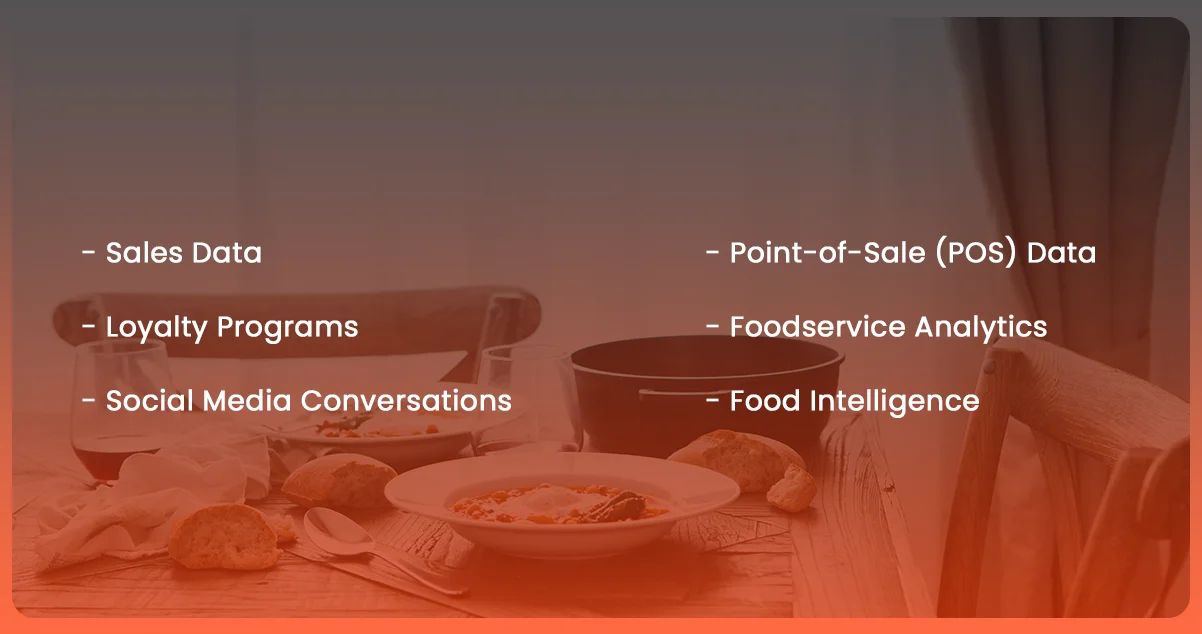
Data generated from various sources is the backbone of CPG Analytics, fuelling its decision-making and insights. Here are some key examples:
Sales Data: The sales data analysis is the basis of CPG analytics as it shows trends in consumer purchase behavior, including the frequency of purchase, the product popularity, and the variations in different regions. Through such treatments, companies can quickly identify patterns and make strategic, solid judgments.
Loyalty Programs: The knowledge obtained through loyalty programs reveals customers' preferences and buying patterns. This information allows brands to personalize their marketing, segment customers, and increase customer satisfaction.
Social Media Conversations: Social media platforms serve as rich repositories of consumer insights. By analyzing conversations, brands can identify emerging trends, gauge brand sentiment, and understand consumer preferences in real time. Integration with CPG analytics platforms automates this process, providing actionable insights at scale.
Point-of-Sale (POS) Data: Real-time POS data provides an opportunity to examine in-store shopper behavior and obtain information about product buyers' preferences, popular combinations, and the scopes of strategic product placement. Data from advanced analytics tools is used to predict demand, improve inventory management, and increase sales.
Foodservice Analytics: A platform such as Food Data Scrape offers professional insights beyond POS data to analyze menu trends, operator movements, and restaurant consumer thoughts. This holistic view allows CPG firms to tailor their offerings to meet the specific requirements of the food service market.
Food Intelligence: By employing food intelligence sources, brands get information regarding ingredient trends, dietary preferences, and new food systems. Integrating the CPG analytics platforms offers an overall picture of market trends so that companies may change their product offerings and marketing strategies when necessary.
In conclusion, CPG analytics help the industry by combining data from several sources to aid in effective strategic decision-making, innovation, and competition in the constantly changing consumer products market.
Unlocking Brand Potential: Using CPG analytics to improve performance will be easier.
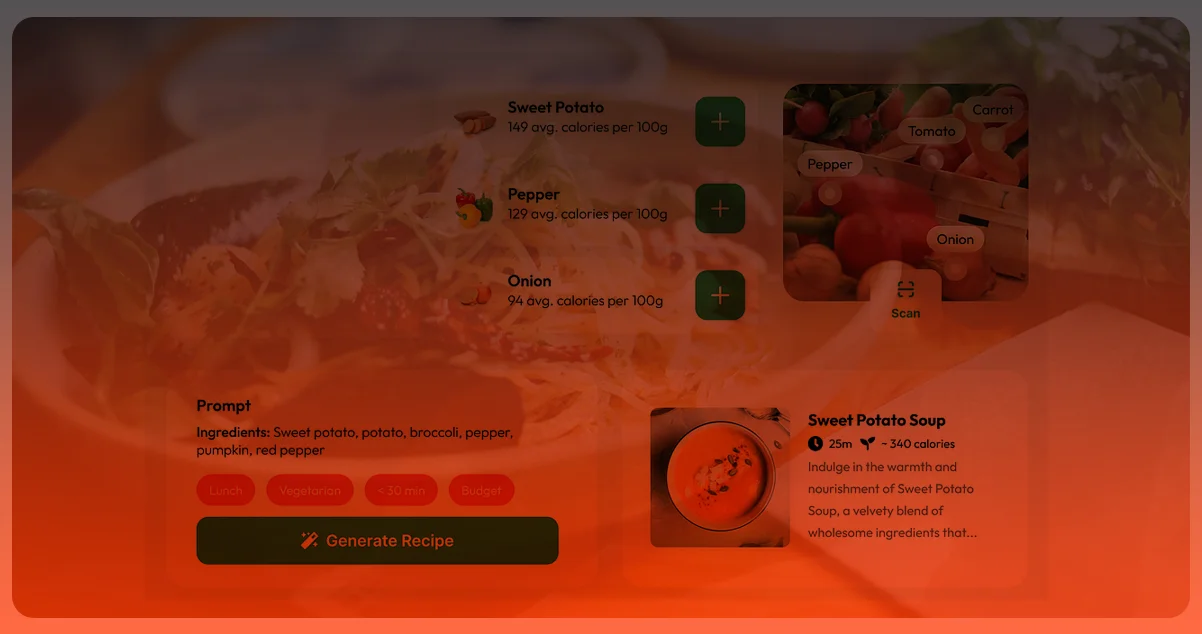
Today, the CPG landscape is very competitive, and if a brand wants to get the most out of it, data analysis is a powerful tool. Here's how companies can harness the power of CPG analytics to drive success:
Enhanced Efficiency: Analyzing analytical tools will enable the brands to identify the most helpful marketing tactics for the specific target audience. Increasing marketing investment efficiency helps brands achieve similar or even better results with the given resources.
Fostering Innovation: CPG analytics allows brands to access abundant information about consumer preferences and trends geared to their interests, making products more end-user-centric. By anticipating these changes, brands can remain ahead of the competition and lead the industry in innovation.
Personalized Consumer Engagement: Using CPG analytics data, brands can develop marketing messages that create a personal bond between them and individual consumers. Through marketing automation technologies, brands can provide personalized content across various platforms, improving shoppers' journeys and creating better relationships with their audience.
Strategic Pricing Strategies: The availability of detailed data helps brands formulate artful pricing strategies that balance profitability and competitiveness in the market. The integration of price optimization software enables dynamic pricing strategies that involve updates as market conditions change.
Efficient Supply Chain Management: CPG analytics helps optimize supply chain operations by suggesting reducing product spoilage through data-driven forecasting. Companies can curb waste by accurately forecasting demand, optimizing production and inventory amounts, and boosting operational efficiency.
CPG analytics adoption helps brands recognize uncharted territories, breed new ideas, and meet the demand of the dynamic consumer product market.
Improving Marketing Analytics for CPGs: Strategies for Success
It is essential to strive for continuous perfectionism when employing CPG marketing analytics. Here are several tactics for CPG brands to elevate their analytical approach:
Invest in Tailored Tools: Use the advanced analytics platforms specially designed to manage complex CPG data sets suitably. By having a lot of options, select the ones that suit your specific needs and budget.
Cultivate a Data-Driven Environment: Create an internal corporate culture based on data insights that will be used to inform strategic decisions. Provide your team with training to read and utilize CPG analytics data appropriately.
Embrace Diverse Data Sources: Keep exploring and utilizing new data sources to understand the market from all angles. Integrate emerging technologies and data sources, such as mobile app usage or weather data, to reveal more complex and specific consumer behavior trends.
Harness AI and Machine Learning: Utilise AI and ML-based analytics tools to automate tasks, identify invisible data patterns, and forecast future trends. This process allows the real-time adjustment of marketing strategies and allows brands to gain from informed decision-making.
Prioritize Actionable Insights: Data analytics is about finding actionable insights rather than getting entangled in the complexities of the data. Set precise campaign objectives and combine analytics data to create marketing operations with the core goals.
Measure and Iterate: Continuously assess campaign performance and make data-driven decisions based on CPG analytics. Implement testing methodologies such as A/B testing to enhance the effectiveness of marketing tactics and, therefore, bring the highest ROI.
These strategies will help develop more refined marketing analytics capabilities, leading to better decision-making and, eventually, increased success in the competitive market environment.
Conclusion: Enhanced marketing analytics is a prerequisite for CPG brands on their way to successful operation in the fast-changing consumer environment. By choosing the appropriate tools, nourishing a data-centric culture, and adopting emerging data sources and technologies, companies can explore the hidden opportunities leading to better marketing strategies and innovation processes. Leveraging actionable insights and continuous measurement enables brand adaptability daily, supporting brands to stay competitive. Focusing on strategic marketing analytics performance will help manufacturers meet consumer tastes when marketing products in the ever-changing marketplace.
Are you in need of high-class scraping services? Food Data Scrape should be your first point of call. We are undoubtedly the best in food data aggregation and mobile restaurant application scraping, and we render impeccable data analysis for strategic decision-making. With a legacy of excellence as our backbone, we help companies become data-driven, fueling their development. Please take advantage of our tailored solutions that will add value to your business. Contact us today to unlock the value of your data.






















































































